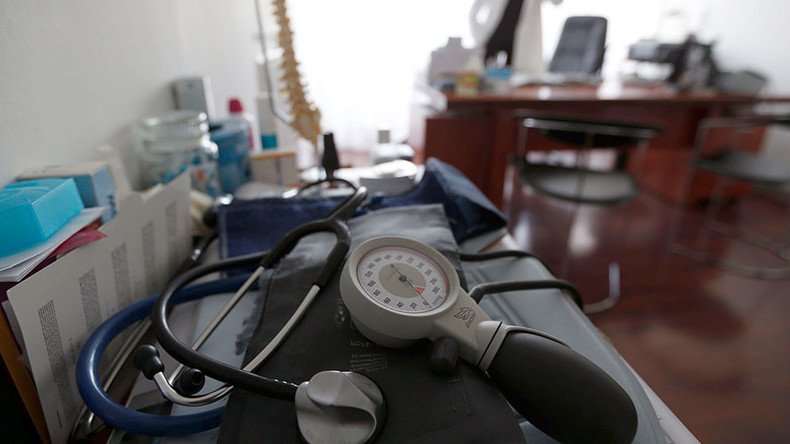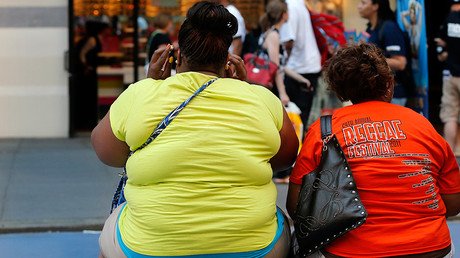Poor can expect to die 20 years before rich in rural US ‒ study

The difference in life expectancy between rich and poor in the US has grown far larger over the last three decades, a new study has found, creating a gap of nearly 20 years in clusters of poor, rural counties, even as life expectancy has risen overall.
In 2014, the life expectancy in the US at birth for both sexes combined was 79.1 ‒ up 5.3 years from 1980 ‒ but differed by 20.1 years between the counties with the lowest and highest life expectancy, researchers at the University of Washington found in a study published Monday in the journal JAMA Internal Medicine.
“Life expectancy in many places in this country is declining. It’s going backward instead of forward,” Dr. Ali Mokdad, a co-author of the report and a professor of global health at the University of Washington’s Institute for Health Metrics and Evaluation, told the Washington Post. “These disparities are widening, so this gap is increasing.”
“This is way worse than any of us had assumed,” he told the Guardian.
NEW: The national life expectancy in the #US has increased since 1980, but improvement depends on where you live: https://t.co/d9RKb6Y9XFpic.twitter.com/UAtJvmLGMr
— IHME at UW (@IHME_UW) May 8, 2017
The researchers used “deidentified” death records from the National Center for Health Statistics and population counts from the US Census Bureau, NCHS and the Human Mortality Database to create annual county-level life tables. From there, they looked at the county-level association between life expectancy and socioeconomic and race/ethnicity factors, behavioral and metabolic risk factors, and health care factors.
“Absolute geographic inequality in life expectancy increased between 1980 and 2014,” the researchers wrote. “Over the same period, absolute geographic inequality in the risk of death decreased among children and adolescents, but increased among older adults.”
People who are poor, get little exercise and lack access to health care don’t live as long, the researchers found, and the quality and availability of health care has a significant effect on health outcomes.
The US has fallen behind other countries ‒ like Australia, whose socialized health care system President Donald Trump recently praised ‒ in focusing on preventative care and programs to curb harmful behaviors like smoking, physical activity, obesity and high blood pressure, all of which are preventable risk factors, Mokdad said.
“We are falling behind our competitors in health. That is going to impact our productivity; that’s going to take away our competitive edge when it comes to the economy,” he told the Post. “What we’re doing right now is not working. We have to regroup.”
Analyzing county-by-county statistics allowed the researchers to identify the areas of greatest inequality. Those pockets were particularly noticeable in parts of the Dakotas, rural western Mississippi, eastern Kentucky and southwestern West Virginia.
The highest life expectancies were in most of central Colorado, western Wyoming and Texas, most of the coastal counties in California, southwestern Florida, and southern Minnesota.
“Looking at life expectancy on a national level masks the massive differences that exist at the local level, especially in a country as diverse as the United States,” lead author Laura Dwyer-Lindgren, a researcher at IHME, said in a statement. “Risk factors like obesity, lack of exercise, high blood pressure, and smoking explain a large portion of the variation in lifespans, but so do socioeconomic factors like race, education, and income.”
Mokdad and his team hope that their research can help start a conversation between communities, healthcare experts and policymakers about how to narrow the inequality gap, and thus the life expectancy gap.
“These findings demonstrate an urgent imperative, that policy changes at all levels are gravely needed to reduce inequality in the health of Americans,” Mokdad said in the statement. “Federal, state, and local health departments need to invest in programs that work and engage their communities in disease prevention and health promotion.”
US life expectancy down for 1st time in 22 years – study https://t.co/4LTAzY1TCbpic.twitter.com/DHJogKXYS0
— RT America (@RT_America) December 8, 2016
The problem in the US, he told the Guardian, is that people don’t have the same access to good preventative care, and then wait until their ailment requires a trip to the hospital for treatment.
“That’s a failure,” he said. “We need to make an investment in prevention… I’m hoping the policymakers will look at this and say whatever we are doing is not about politics any more, it’s about the future of the United States.”
While there will always be disparities in any country, the disparities in the US that Mokdad and his team found are unexpected “in a country with our wealth and might,” he said.
“We spend more money on healthcare than anybody else, and we debate the hell out of healthcare more than anybody else, and still the disparities are increasing,” Mokdad continued. “Everybody, in Europe and elsewhere, is increasing life expectancy at a greater pace than we are, so that’s also disappointing and not acceptable for a country like the US.”













